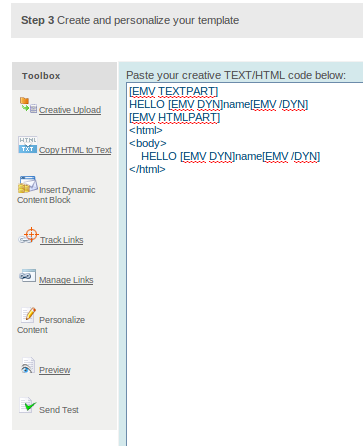
This weekend I finally had the chance to
work a couple hours on the namshi/emailvision
library, which lets you integrate CampaignCommander
as (email) notification solution in your
PHP projects.
I already had a proof-of-concept of this library since weeks, and it was already pushed to Github, but since I had no valid API account to do some integration tests, I could not really “publicize” it.
Right now I refactored the library and added a couple integration tests which are working flawlessy, so, in this post, I’m going to show you how easy it is to send emails with Emailvision’s solution directly from PHP.
Installation
As usual with the latest libraries built for PHP, the installation can simply be done with composer, as the library itself is available over packagist:
1
| |
then you simply have to run a php composer.phar update and
you can start utilizing it in your codebase (the namespace is
Namshi\Emailvision, as this library has been built in the
context of our company, namshi.com).
As of today, the latest stable release is 1.0.0, which is the
one we recommend to run in production – keep an eye on packagist
if we come up with changes, but I bet it won’t change that much
in the near future, as emailvision’s API is pretty simple.
Usage
After you configure transactional email templates in the CampaignCommander web interface, you just need to keep in mind (and in your code) the unique identifier and the security tag of the template; the rest is very straightforward:
1 2 3 4 5 6 7 8 9 10 11 12 13 14 | |
The nice thing here is that Emailvision lets you schedule
emails, so you can just play with the senddate parameter
and set it to the future – just be aware that it needs to
be a DateTime instance:
1 2 3 4 5 6 7 8 9 10 11 12 13 14 15 16 | |
This code will tell CampaignCommander to trigger the email on the 1st of January 2025, at 12:45.
Dynamic content in your emails
If we would stop here, the library would be pretty useless, since the power of transactional emails is to be able to serve dynamic content: in fact, the API allows you to pass as much variables as you want that can be configured and used in the email templates you’ve created in emailvision’s web interface.
To do so, once you call the sendEmail method of the
client, just pass an array of variables (strings) as second
argument:
1 2 3 4 5 | |
and then you will start receiving personalized emails:

Running the tests
Of course, we’ve added some unit and integration
tests which let us refactor the library and add
functionalities to it without regressions; to run
the test suite, just use phpunit:
1 2 3 | |
You will notice that even though the tests should contain some actual HTTP calls, they are very fast: this is because, unless you provide some real credentials for emailvision, integration tests aren’t run by default.
To run them, you will have to create a new dummy email template
on CampaignCommander and store the credentials you get
after saving it and the email address that is going to
receive the test emails in a file named emailvision.config
in your system’s temporary folder (you can get it by
running php -r "echo sys_get_temp_dir();"):
1 2 3 4 5 | |
Enjoy!